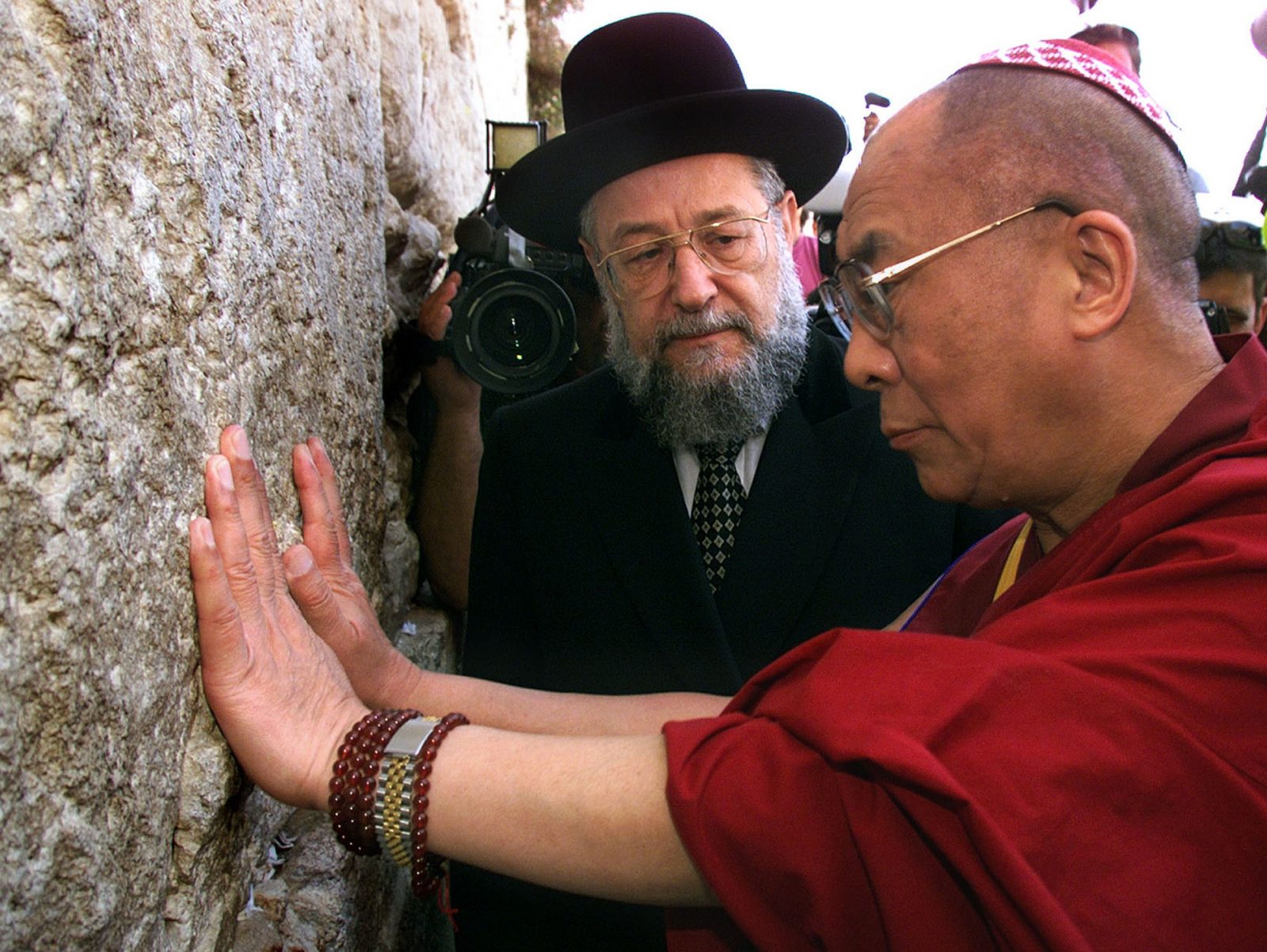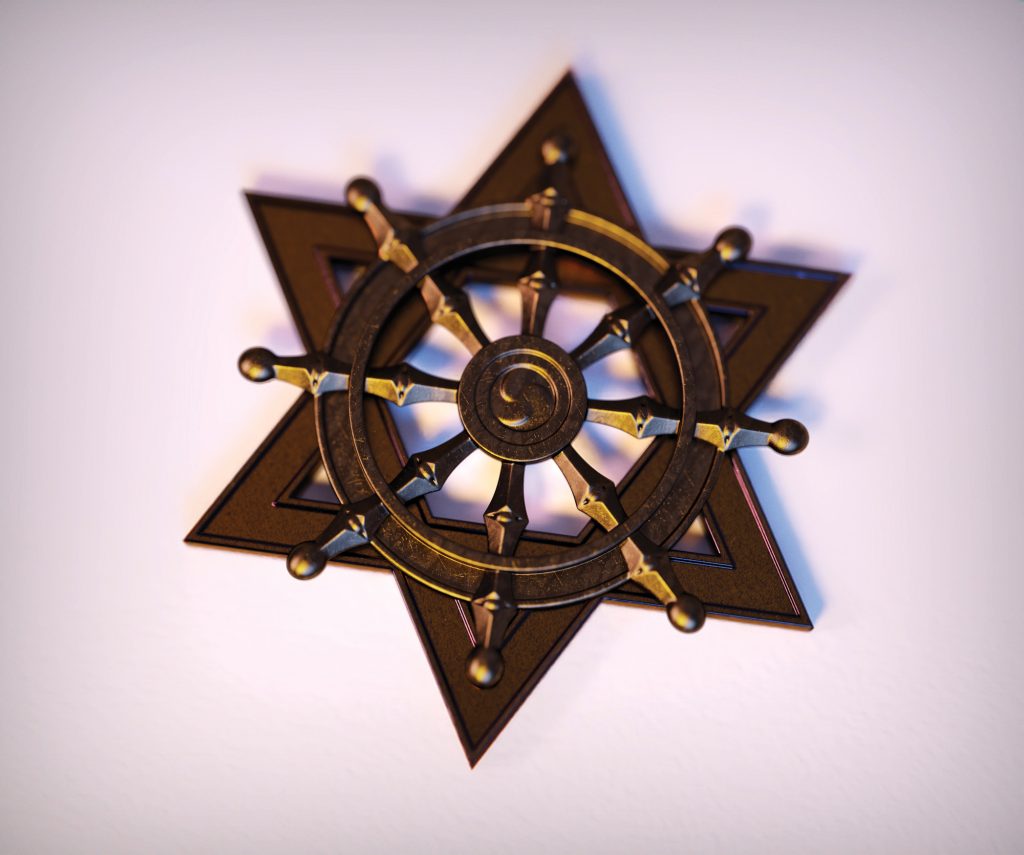Did you know that Tricycle was part of a Jewish conspiracy to take over Buddhism? No? Neither did I, until someone forwarded me a link from a blogger who made the claim. I was offended. I work at Tricycle, and I’m Jewish. So why didn’t anyone tell me about the secret plot?
Of course, there isn’t one. Such conspiracy theories have not gained much traction in Buddhist circles, but I worry that they speak to a more widespread confusion around the history of Jews in American Buddhism. It is no secret that among converts in the US there are a lot of Jews. Yet although this fact has been a topic of conversation for many years, there has not been a comprehensive analysis that deals with all of the issue’s complexities. Ignorance alone does not explain anti-Semitism, but conspiracy theories seem to take root in that murkiness.
Fortunately, a new book can shed some light on the topic: American JewBu: Jews, Buddhists, and Religious Change (Princeton, November 2019) by Emily Sigalow, a sociologist of contemporary Jewish life and postdoctoral fellow at the Duke Center of Jewish Studies.
American JewBu:
Jews, Buddhists, and Religious Change
by Emily Sigalow
Princeton University Press, 2019, $29.95, 280 pp., hardcover
American JewBu is not a sentimental book about the author’s personal experience. For the most part, Sigalow leaves herself out of it, except to discuss research methods and to act as an impartial interviewer and observer. Yet in the simple laying out of fact, Sigalow outlines a heritage and history that situate the Jewish Buddhist experience within a distinct subculture. She does not claim to have a definitive answer for the apparent affinity for Buddhism among Jews. Instead, she explores a different and perhaps more fruitful line of inquiry: What is the history of the Jewish-Buddhist encounter in America, and what does it look like today?
That encounter has been complicated. Even the term “JewBu” is contentious. As Sigalow notes, Jewish Buddhists under 30 tend to identify as JewBus, while many baby boomers “dislike the label and view it as a form of disparagement or condescension.” But American JewBu attempts to clarify this complication without resorting to oversimplifications.
Sigalow comes to a few important conclusions. Her most emphatic claims are that the Jewish adoption of Buddhist practices amounts to more than a “salad bar religion” whereby dabblers “pick and choose among religious options in highly individualistic and idiosyncratic ways.” Rather, she argues that “distinct historical and social conditions shape religious mixing in the United States, from modernization to anticapitalism to counterculturalism.” She borrows this view of religious mixing from sociological discussions about syncretism. The conversation about syncretism has traditionally looked at how minority groups assimilate to the majority, but Sigalow asserts that two minority traditions can have the same type of influence on each other.

The study is divided into two parts. The first section traces the wide range of Jewish encounters with Buddhism dating back to the public conversion of Charles T. Strauss in 1893, which marked the first American Buddhist “initiation ceremony” (a rite that was created for the occasion in order to make a statement to Western audiences). In the second section, Sigalow draws from her historical analysis, as well as dozens of interviews she conducted with Jewish Buddhists, to explore the various ways that Judaism and Buddhism have blended in a country where they are both religious minorities.
She examines how Jews have been prominent American Buddhist leaders from the early days of Buddhism’s journey to the US. She looks at figures such as Strauss; Buddhist sympathizer and Ethical Culture founder Felix Adler (1851–1933); Pure Land priest and World War II anti-internment activist Reverend Julius Goldwater (1908–2001); Rinzai Zen master and Sufi murshid Samuel Lewis (1896–1971); and magazine publisher and D. T. Suzuki student William Segal (1904–2000). In each chapter of this encounter, Jews took part in the modernization of Buddhism into a religion largely compatible with scientific values and American liberal ideals of pluralism and equality. Jews were far from the only modernizers—many of the Asian teachers who first taught American converts had already begun to place greater emphasis on meditation and Buddhism’s compatibility with science—but there were Jews in each generation of interpreters.
Sigalow’s best explanation for the early trend of Jews turning to Buddhism (although she does not suggest it is a complete explanation) is that Jews were disproportionately represented in the “social location” where Buddhism took root in American communities of European descent—namely, among educated people in major cosmopolitan areas. (It’s worth noting that throughout the history of Buddhism the dharma has tended to enter new cultures first through the merchant and aristocratic classes.) But her more significant insight is the recognition that later generations of Jews were drawn to a Buddhism that was already translated and adapted to be palatable to a Jewish audience. At this point Jewish Buddhists begin to emerge as neither entirely Jewish nor entirely Buddhist.
That distinct identity becomes even more apparent as Sigalow begins to discuss the rise of Jewish meditation after books like Rodger Kamenetz’s The Jew in the Lotus in 1994 and Sylvia Boorstein’s That’s Funny, You Don’t Look Buddhist in 1997 opened up the conversation about JewBus. In looking at Jewish meditation, Sigalow shifts from talking about the influence of Jewish values on Buddhism to an analysis of how American Judaism has incorporated Buddhist influences.
These Jewish meditation practices take a few different forms. Some Jewish meditation involves incorporating certain Buddhist practices to add an embodied dimension to Jewish spirituality, which often means omitting practices that are seen as incompatible. (No idol worshipping!) The issue of compatibility is not as much of a concern for Buddhists and other traditions in Asia, where it is far more common for people to belong to multiple religious groups than it is for them to hold exclusivist beliefs. Sigalow notes that some American JewBus, such as Boorstein, likewise do not see any problem with identifying as a member of multiple religions.
But plenty of Jewish meditators are concerned with whether or not their practice is kosher, Sigalow found. Many of these practitioners left their religion for Buddhism but returned to Judaism later in life. Other groups see themselves as reviving forgotten practices within Jewish mystical traditions; occasionally they describe their goal as defending Judaism from being taken over by Buddhist influences. Some meditators speak explicitly about taking practices from Buddhism, while others erase the Buddhist roots and claim that the practice is entirely Jewish. (Rabbi Alan Lew, who cofounded the Jewish meditation center Makor Or with Jewish Zen Buddhist priest Norman Fischer, refers to some of the latter attempts as “dubious re-creations of Kabalistic meditation practices that may or may not have ever existed.”) Meanwhile, movements like Reconstructionist Judaism and Jewish Renewal have tried to enrich Jewish religious life by including a wide range of resonant influences, Buddhism being just one of many.
Questions of cultural imperialism abound in this interaction. Jews are not uniquely guilty of appropriation—a concept that has entered the mainstream only in the past few years and would have been unknown to the Jewish Buddhists of the 20th century—but are guilty of it nonetheless. However, Sigalow’s account suggests that Buddhism has influenced Judaism in America at least as much as Judaism has influenced Buddhism (or as much as Protestant Christian and American liberal values have influenced both). Of course, the same can be said of Zen Buddhists in Japan, Vajrayana Buddhists in Tibet, or literally any form that Buddhism took after the teachings left the Buddha’s lips. The issue of appropriation is further complicated by Buddhism’s missionary imperative.
Sigalow neither apologizes for appropriation nor condemns it; her tendency is to remain an objective observer.
As Sigalow writes in her final pages: “Flux and mixing, not stasis or uniformity, have been the norms in Jewish and Buddhist history. That these two traditions have been altered and reconfigured as a result of their encounter is inevitable and unavoidable.”
The dharma has always accommodated the needs of a given culture. And after generations of living in diaspora, Jews have also learned the delicate craft of holding onto one’s cultural identity while adapting to the surrounding society. While this can be said of nearly any religion, Judaism and Buddhism in 20th-century America were more open than many of their contemporaries to this particular marriage of teachings.
Sigalow, however, neither apologizes for appropriation nor condemns it. “It is not my charge as a scholar to make a normative judgment about the new reconfigurations [of Judaism and Buddhism], thus assigning them a certain worth, good or bad,” she writes, in keeping with her tendency to remain an objective observer.
Her reserving of judgment is at times frustrating or comes off as a dodge. But ultimately, in not answering those questions, she reserves space for more facts and analysis to better help the reader come to their own conclusion.
I recognized the value of this approach while I was reading American JewBu on the subway and found myself doing something peculiar: slipping a notebook in front of the cover to hide the title from fellow passengers. I felt silly when I realized what I was doing. Being just a little over five feet tall with curly black hair and a nose that would look offensive in a sketch, I was not going to have much success concealing my Ashkenazi ethnicity. (Twice in my life, complete strangers have asked me if I am a lawyer.) Moreover, I should have nothing to hide. But perhaps I was not embarrassed about the Jew in the title. At a recent doctor’s visit, a medical clerk asked about my religious affiliation, and I answered “none.” The person I was with cocked her head and gave me a quizzical look. “Actually,” I conceded to the clerk, “I’m Buddhist.” The reason I hesitated when asked about my religion was that I knew the answer would not fit neatly into the space on a
hospital form.
Throughout the book, Sigalow acknowledges this complexity and that there is neither one Judaism nor one Buddhism. Even narrowing the scope down to the encounter between Judaism and Buddhism in America leaves us with a variety of traditions on both sides of the equation. Sigalow divides JewBus into three categories: practicing Buddhists who are culturally Jewish, practicing Jews who turn to Buddhism for spiritual enrichment, and those who see no distinction between their Jewish and Buddhist practice. From this perspective, the term “JewBu” is not a box that limits one’s identity but a way of labeling a shared history of messy interactions.
American JewBu does not make an impassioned plea for understanding and acceptance of Jewish Buddhists in America. It does not claim that there is anything special about the encounter of these two religions. It does not attempt to give definitive explanations for many of the concurrences between the groups, nor does it determine whether they benefited from or were harmed by this encounter. It does not even take a stance on the theological compatibility of Buddhism and Judaism.
Instead, Sigalow sticks to a descriptive method and leaves the rest for us—for Jews to think about their place in recent Buddhist history, for non-Jews to better understand their Jewish teachers or dharma friends, or for any curious person to consider how cultures and religions interact. The book leaves the reader with something that Jews and Buddhists alike may find familiar: more questions than answers, but a feeling that getting further from a solution has somehow made you wiser.
Thank you for subscribing to Tricycle! As a nonprofit, we depend on readers like you to keep Buddhist teachings and practices widely available.
